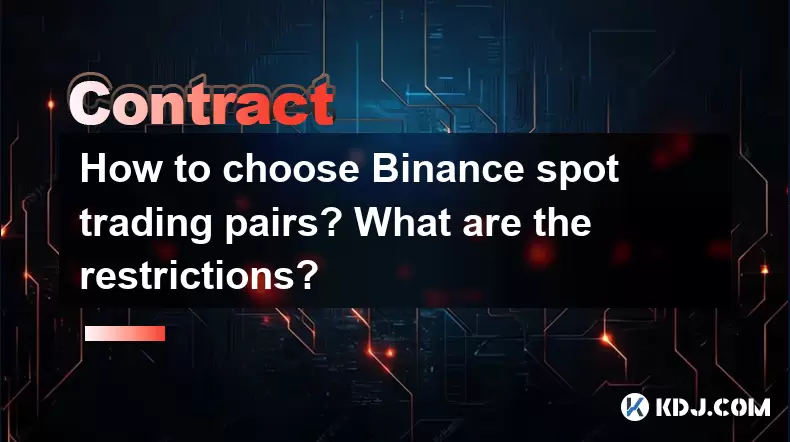-
 Bitcoin
Bitcoin $115200
-2.68% -
 Ethereum
Ethereum $3601
-5.16% -
 XRP
XRP $3.035
-2.96% -
 Tether USDt
Tether USDt $0.9997
-0.04% -
 BNB
BNB $764.5
-5.43% -
 Solana
Solana $168.1
-5.92% -
 USDC
USDC $0.9998
-0.02% -
 Dogecoin
Dogecoin $0.2090
-4.80% -
 TRON
TRON $0.3272
-0.49% -
 Cardano
Cardano $0.7306
-5.00% -
 Hyperliquid
Hyperliquid $39.16
-12.22% -
 Stellar
Stellar $0.3967
-4.96% -
 Sui
Sui $3.566
-5.95% -
 Chainlink
Chainlink $16.55
-6.57% -
 Bitcoin Cash
Bitcoin Cash $552.3
-3.90% -
 Hedera
Hedera $0.2516
-4.69% -
 Avalanche
Avalanche $21.99
-5.75% -
 Toncoin
Toncoin $3.621
-0.28% -
 Ethena USDe
Ethena USDe $1.000
-0.03% -
 UNUS SED LEO
UNUS SED LEO $8.951
0.02% -
 Litecoin
Litecoin $105.9
-3.59% -
 Shiba Inu
Shiba Inu $0.00001232
-5.00% -
 Polkadot
Polkadot $3.640
-5.55% -
 Uniswap
Uniswap $9.048
-7.03% -
 Monero
Monero $301.8
-1.51% -
 Dai
Dai $0.9999
-0.01% -
 Bitget Token
Bitget Token $4.334
-3.66% -
 Pepe
Pepe $0.00001064
-6.17% -
 Cronos
Cronos $0.1367
-5.78% -
 Aave
Aave $259.2
-4.59%
How to choose Binance spot trading pairs? What are the restrictions?
Choose trading pairs on Binance wisely by considering liquidity, volatility, volume, and fees to maximize potential and manage risk effectively.
May 18, 2025 at 01:42 am

Choosing the right trading pairs on Binance for spot trading is crucial for maximizing your trading potential and managing risk effectively. This article will guide you through the process of selecting the best trading pairs and understanding the restrictions that come with trading on Binance.
Understanding Binance Spot Trading Pairs
Binance offers a wide variety of trading pairs for spot trading, which involves buying and selling cryptocurrencies for immediate delivery. A trading pair consists of two currencies, where one is traded against the other. For example, in the BTC/USDT pair, Bitcoin (BTC) is traded against Tether (USDT). Understanding the dynamics of these pairs is essential for making informed trading decisions.
When choosing a trading pair, consider the following factors:
- Liquidity: High liquidity means there are enough buyers and sellers to execute trades quickly and at stable prices. Pairs like BTC/USDT and ETH/USDT are known for their high liquidity.
- Volatility: Volatility can offer opportunities for profit but also increases risk. Pairs with high volatility might be suitable for short-term trading strategies.
- Trading Volume: Higher trading volumes indicate more interest and activity in a pair, which can lead to better price discovery and tighter spreads.
- Fees: Binance charges different fees for different pairs. Understanding these fees can help you minimize costs.
How to Choose the Right Trading Pair
To choose the right trading pair on Binance, follow these steps:
- Assess Your Trading Goals: Determine whether you are looking for short-term gains or long-term investments. This will influence the type of pairs you should consider.
- Analyze Market Trends: Use tools like Binance's trading view to analyze market trends and identify pairs that align with your trading strategy.
- Check Liquidity and Volume: Navigate to the Binance spot market and check the liquidity and trading volume of the pairs you are interested in. You can find this information on the trading page for each pair.
- Evaluate Fees: Look at the fee structure for each pair. Binance offers different fee tiers based on your trading volume and whether you are using BNB to pay fees.
- Consider the Asset: Understand the fundamentals of the cryptocurrencies involved in the pair. Research their use cases, development teams, and market sentiment.
Restrictions on Binance Spot Trading Pairs
While Binance offers a vast selection of trading pairs, there are certain restrictions and limitations you should be aware of:
- Geographical Restrictions: Binance may restrict access to certain trading pairs based on your geographical location due to regulatory compliance.
- Trading Limits: There are minimum and maximum trading limits for each pair. These limits can vary and are designed to prevent market manipulation and ensure fair trading.
- Withdrawal Limits: Similar to trading limits, there are withdrawal limits for each cryptocurrency. These limits can affect your ability to move funds out of your Binance account.
- Pair Availability: Not all trading pairs are available at all times. Binance may delist or add new pairs based on market demand and regulatory changes.
How to Check Trading Pair Restrictions on Binance
To check the restrictions on a specific trading pair, follow these steps:
- Log into Your Binance Account: Ensure you are logged into your Binance account.
- Navigate to the Spot Market: Go to the spot trading section of the Binance platform.
- Select a Trading Pair: Choose the trading pair you are interested in.
- Check the Trading Rules: On the trading page for the selected pair, look for the "Trading Rules" section. This will provide information on any specific restrictions or limits for that pair.
- Review the Fee Schedule: Also, review the fee schedule to understand the costs associated with trading that pair.
Tips for Effective Trading on Binance
To enhance your trading experience on Binance, consider the following tips:
- Use Stop-Loss Orders: Implementing stop-loss orders can help you manage risk by automatically selling a position when it reaches a certain price.
- Stay Informed: Keep up with market news and updates from Binance to stay ahead of any changes that might affect your trading pairs.
- Diversify Your Portfolio: Don't put all your funds into one trading pair. Diversifying can help mitigate risk.
- Utilize Binance Tools: Binance offers various tools like the TradingView charts and the Binance Academy to help you make informed trading decisions.
Frequently Asked Questions
Q: Can I trade any cryptocurrency pair on Binance?
A: Not all cryptocurrency pairs are available for trading on Binance. The availability of pairs can depend on your geographical location and Binance's listing decisions. Always check the spot market section to see which pairs are currently available for trading.
Q: How often does Binance update its trading pairs?
A: Binance regularly updates its trading pairs based on market demand and regulatory requirements. New pairs can be added, and existing ones can be delisted. It's important to stay updated through Binance's official announcements and the platform's trading section.
Q: Are there any special requirements for trading certain pairs on Binance?
A: Some trading pairs on Binance may have special requirements, such as higher minimum trading amounts or specific verification levels. These requirements can be found in the "Trading Rules" section for each pair on the Binance platform.
Q: Can I trade during off-hours on Binance?
A: Yes, Binance operates 24/7, allowing you to trade at any time. However, trading volumes and liquidity can vary significantly during off-hours, which might affect your trading experience.
Disclaimer:info@kdj.com
The information provided is not trading advice. kdj.com does not assume any responsibility for any investments made based on the information provided in this article. Cryptocurrencies are highly volatile and it is highly recommended that you invest with caution after thorough research!
If you believe that the content used on this website infringes your copyright, please contact us immediately (info@kdj.com) and we will delete it promptly.
- Cardano Price, Pi Network, and Crypto Presales: What's the Buzz?
- 2025-08-02 08:50:12
- XRP Fund Success: Teucrium CEO Reveals Trillions on the Horizon
- 2025-08-02 09:10:12
- Challenge Coins: More Than Just Collectibles – A Military Tradition
- 2025-08-02 08:30:12
- Under the Radar: Hunting for 100x Crypto Gems in a Pi Network World
- 2025-08-02 08:30:12
- Bitcoin, Solana, and Altcoin Season: What's Hot and What's Not?
- 2025-08-02 07:10:12
- Toncoin, Rollblock, and the Token Offering Landscape: A New York Minute
- 2025-08-02 07:10:12
Related knowledge

Why is my Bitstamp futures position being liquidated?
Jul 23,2025 at 11:08am
Understanding Futures Liquidation on BitstampFutures trading on Bitstamp involves borrowing funds to open leveraged positions, which amplifies both po...

How to report Bitstamp futures for taxes?
Jul 30,2025 at 08:35am
Understanding Bitstamp Futures and Taxable EventsWhen trading Bitstamp futures, it’s essential to recognize that these financial instruments are treat...

Does Bitstamp offer inverse contracts?
Jul 23,2025 at 01:28pm
Understanding Inverse Contracts in Cryptocurrency TradingIn the realm of cryptocurrency derivatives, inverse contracts are a specific type of futures ...

What is the difference between futures and perpetuals on Bitstamp?
Jul 27,2025 at 05:08am
Understanding Futures Contracts on BitstampFutures contracts on Bitstamp are financial derivatives that allow traders to speculate on the future price...

How to find your Bitstamp futures trade history?
Jul 23,2025 at 08:07am
Understanding Bitstamp and Futures Trading AvailabilityAs of the current state of Bitstamp’s service offerings, it is critical to clarify that Bitstam...

Can I use a trailing stop on Bitstamp futures?
Jul 23,2025 at 01:42pm
Understanding Trailing Stops in Cryptocurrency TradingA trailing stop is a dynamic type of stop-loss order that adjusts automatically as the price of ...

Why is my Bitstamp futures position being liquidated?
Jul 23,2025 at 11:08am
Understanding Futures Liquidation on BitstampFutures trading on Bitstamp involves borrowing funds to open leveraged positions, which amplifies both po...

How to report Bitstamp futures for taxes?
Jul 30,2025 at 08:35am
Understanding Bitstamp Futures and Taxable EventsWhen trading Bitstamp futures, it’s essential to recognize that these financial instruments are treat...

Does Bitstamp offer inverse contracts?
Jul 23,2025 at 01:28pm
Understanding Inverse Contracts in Cryptocurrency TradingIn the realm of cryptocurrency derivatives, inverse contracts are a specific type of futures ...

What is the difference between futures and perpetuals on Bitstamp?
Jul 27,2025 at 05:08am
Understanding Futures Contracts on BitstampFutures contracts on Bitstamp are financial derivatives that allow traders to speculate on the future price...

How to find your Bitstamp futures trade history?
Jul 23,2025 at 08:07am
Understanding Bitstamp and Futures Trading AvailabilityAs of the current state of Bitstamp’s service offerings, it is critical to clarify that Bitstam...

Can I use a trailing stop on Bitstamp futures?
Jul 23,2025 at 01:42pm
Understanding Trailing Stops in Cryptocurrency TradingA trailing stop is a dynamic type of stop-loss order that adjusts automatically as the price of ...
See all articles

























































































